Where Does The Polar Bear Get Matter For Repair, Growth, Motion, And Warmth From?
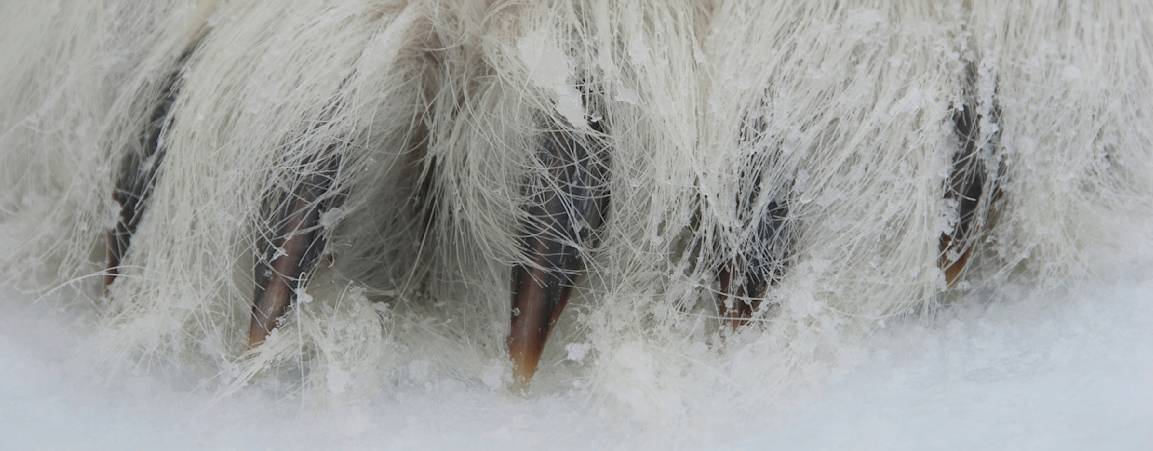
Adaptations & Characteristics
How do polar bears survive, and thrive, on the Chill sea ice? Follow Anuri to find their secrets.
Wonderfully Adjusted
In the Chill, temperatures tin plunge to -40° or -46 C (-50 F) in winter and stay that way for days or weeks. But polar bears are built for those conditions.
From fur to peel, to paws and claws, the sea bear's physique is designed to protect them from the cold, hunt seals, and boss the Arctic.
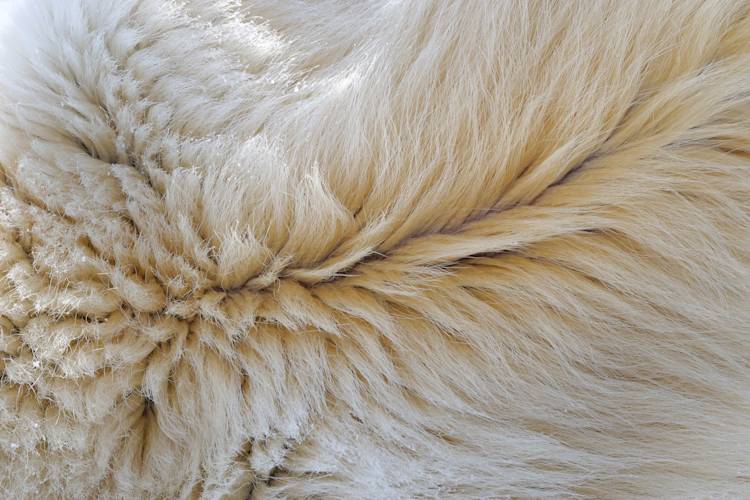
2 Layers of Fur
Polar bears have 2 layers of fur that preclude almost all oestrus loss. In fact, the fur keeps them and so warm that adult males can quickly overheat when they run.
Surprisingly, their fur isn't actually white. It just looks that way. Each hair shaft is pigment-costless and transparent with a hollow cadre that scatters and reflects visible lite.
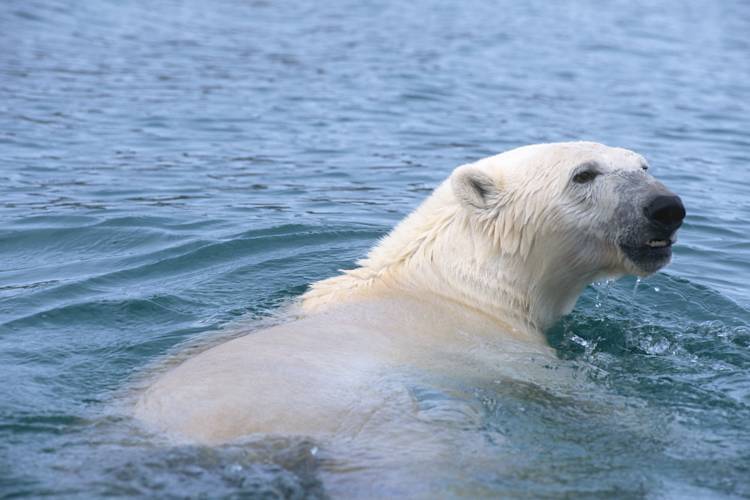
Thick Padding of Fatty
In addition to 2 layers of fur, a thick layer of fatty helps go along the bears warm. A polar behave'south body fatty can measure up to 11.four cm (iv.49 in).
In the water, polar bears rely more on their fat than their fur to keep out the cold; wet fur is a poor insulator. That's why mother bears don't similar to swim with immature cubs in the spring—the cubs don't take enough fat to stay warm.


Specialized Paws
Polar bear paws are platonic for getting effectually in the Arctic.
They're huge—as big equally dinner plates—and measure out upwards to 30 cm (11.81 in) across. This helps the bears walk on sparse ice without falling through.
The polar bear's super-paws are also designed for pond. The forepaws deed similar large paddles and their hind paws serve as rudders.
Sideslip-Proof Treads
Blackness footpads on the bottom of each paw are covered by minor, soft bumps known every bitpapillae.
Papillae grip the ice and keep the behave from slipping. Tufts of fur between their toes and footpads help with warmth, as well.
Powerful Claws
Thick, curved, sharp, and strong—each measures more than v cm (one.97 in) long. Polar bears use their claws to grab and hold slippery seal prey and to gain traction on ice.

Ears & Tails
Polar bear ears are small-scale and round, and their tails short and meaty, to preclude oestrus loss and conserve the most warmth possible.
Photo: Daniel J. Cox
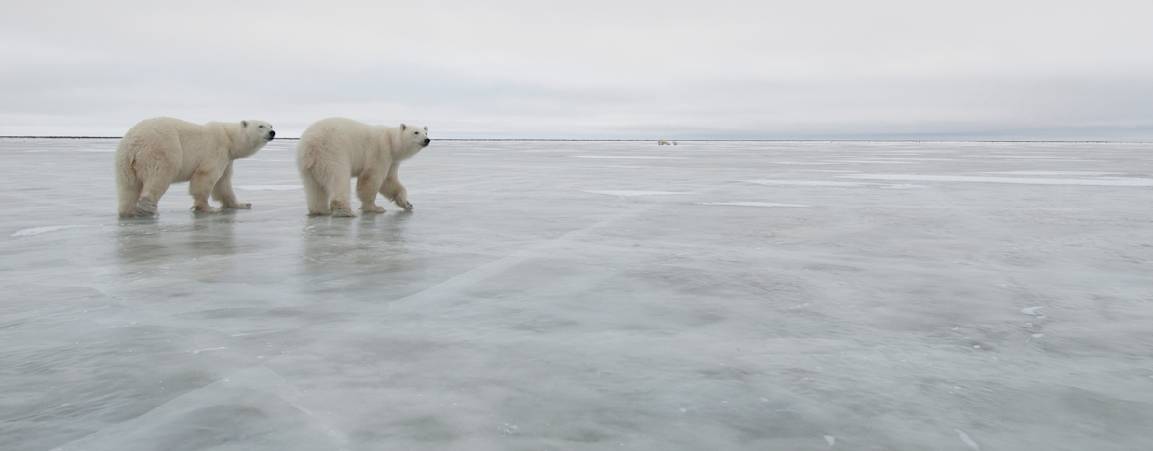
Size & Weight
Adult males normally weigh 350- 600 kg (775-1,300 lb). Developed females are usually 150-290 kg (330-650 lb). But some can exist larger. Researchers in Canada estimated one male person carry at 800 kg (1,700 lb)!
Polar bears are also tall. Scientists usually measure their height at the shoulder when on all fours. Those heights are typically 1-1.5 m (three.3-5 ft) for adult polar bears. An adult male may reach over iii m (10 ft) when standing on its hind legs.
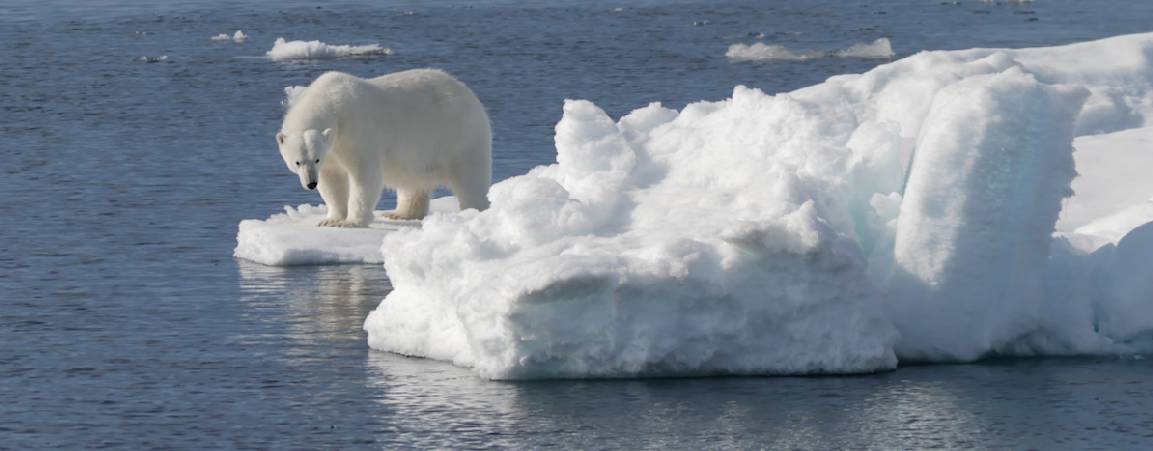
Feeling inspired?
Bring together united states of america in our efforts to encourage leaders to make a swift transition away from fossil fuels and to renewable energy sources, past spreading awareness about the real and pressing threat of climate warming.
Where Does The Polar Bear Get Matter For Repair, Growth, Motion, And Warmth From?,
Source: https://polarbearsinternational.org/polar-bears-changing-arctic/polar-bear-facts/adaptions-characteristics/
Posted by: stephensbrabtleater.blogspot.com


0 Response to "Where Does The Polar Bear Get Matter For Repair, Growth, Motion, And Warmth From?"
Post a Comment